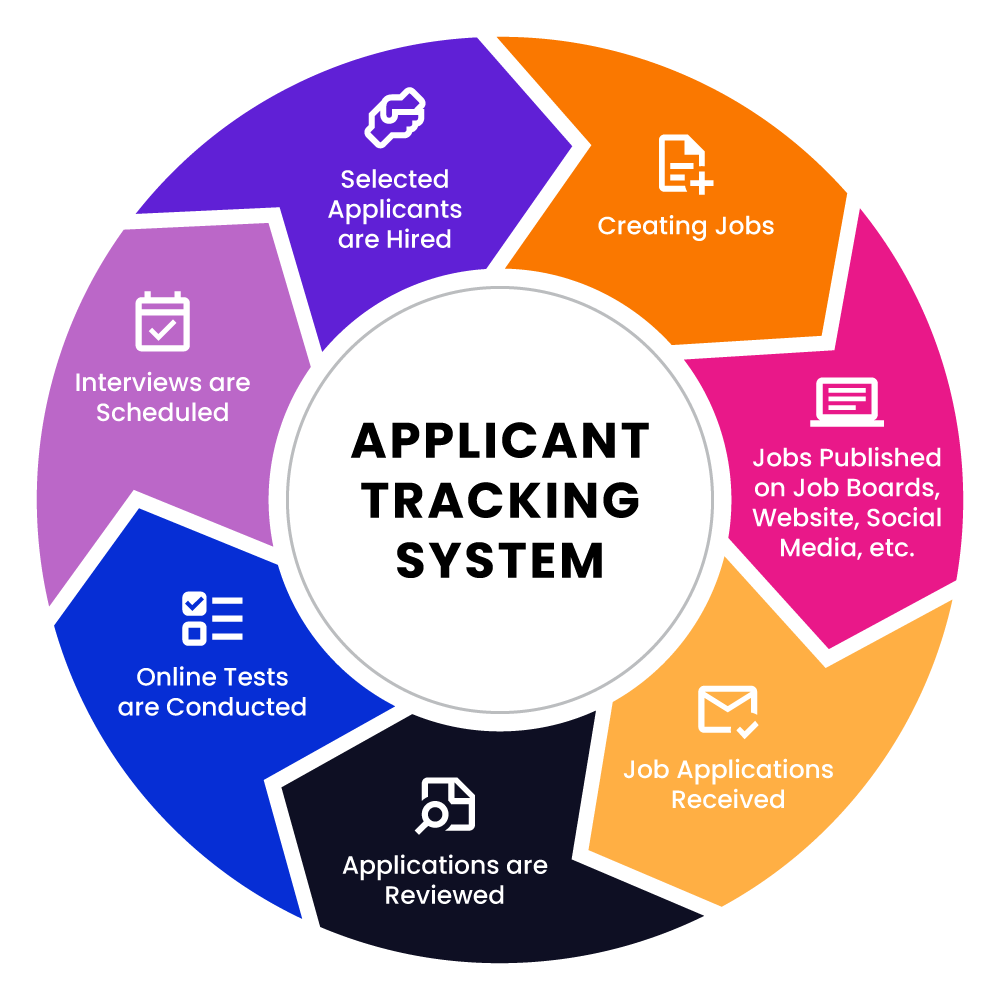“Hiring people is an art, not a science, and resumes can’t tell you whether someone will fit into a company’s culture.”
– Howard Schulz, Chairman & CEO of Starbucks
Most hiring managers would readily agree with Howard Schultz that, when a company searches for talent, no single source of information is ever going to provide a full, complete, and comprehensive applicant review.
Effective candidate hiring comes from a healthy mix of many different sources, such as formal interviews, back and forth communication, internal and external discussions, resumes, reference checks and team observations. Sometimes even a stellar resume can mask critical deficiencies in applicants only discoverable through verbal communication, as key clues of professional fitness often come from presentation.
Unfortunately, for HR managers, getting the applicant tracking process right is an absolute must, and by no means an easy task. HR managers are under constant pressure to ensure that they are using all of the right sources of information to find the right candidate for the right job at the right time and place. If they do it properly, critical tasks get completed on time, and the organization can be highly successful. If they don’t, the company cannot produce to expectation, business slows, and valuable talent goes elsewhere.
Adding to this challenge is the amount of power job applicants hold over the hiring process. Just as buyers have shopping choices, potential employees have the power to decide which employer they join, how long they choose to stay with them, how aggressive they are in helping the organization achieve their goals, among others.
For this very reason, modern HR managers utilize Applicant Tracking Systems (ATS) to ensure that the hiring process equips them to not only find the right people, but also treats them well. While an ATS alone is valuable, integration with other tools and systems makes it even more effective. By connecting job postings, communication platforms, and HR workflows, ATS integration solutions streamline every stage of hiring, from the moment an applicant expresses interest in a job, up until and beyond their first day.
What is an Applicant Tracking System (ATS)?
An Applicant Tracking System (ATS) is a critical part of the hiring process that makes life easier for HR managers and relevant stakeholders. It is a software program (or part of a series of software solutions) that can manage the entire hiring and recruitment processes from top to bottom.
An efficient ATS system should be able to:
- Receive, store, and process applicant information
- Include tools to further identify, filter, and choose quality candidates
- Categorize resumes based on desired keywords and criteria for selection
- Assist in aligning initial screening calls, scheduling interviews, and coordinating with stakeholders
Additionally, some advanced ATS systems may be able to scan job portals, social media channels, and career websites to source ideal candidates using keywords based on education, experience, and skills.
Most organizations have multiple systems to manage applicant tracking. If integrated well, these systems can optimize the hiring process and speed up candidate selection, management, and consequently minimize the time-to-fill the desired position.
What is ATS integration?
ATS integration is the process of connecting an Applicant Tracking System (ATS) with other HR and business tools to streamline and automate the hiring process. Integration enables seamless data transfer between systems and provides a centralized view of employee data, resulting in a more efficient hiring process.
Related Article: The Complete Guide to Employee Onboarding Automation
Why does ATS integration matter?
It is very critical to implement ATS integration with the data in HR systems for an efficient hiring process. Applicants have high expectations when they apply for jobs. They want the hiring process to be quick, smooth and transparent. HR managers have similar expectations. They need the hiring process to be as efficient as possible so they can process as many candidates as time will allow. Unfortunately, however, if an organization is using multiple systems to track applicant activity, it can slow down both of these parties and lead to multiple delays and loss of talent availability.
Integrating applicant tracking data together and with other critical HR systems prevents delays from occurring, strengthens the hiring process and increases productivity and morale in the long run. ATS integration ensures that applicants move through the process faster, so that all parties can come to a decision in a reasonable time frame. It also helps to ensure that the right person for the job is selected based on multiple sources of data discovered during the hiring process.
Examples of Common ATS Integrations
HR Management Systems
Integrating an ATS with HR management platforms like BambooHR or Workday allows seamless data transfer from candidate profiles to employee records, automating the transition from recruitment to onboarding.
Payroll Systems
Integrating with payroll systems like ADP or Paycor makes it possible to automatically transfer employee data directly from the ATS to the payroll platform, ensuring timely payment and eliminating the need for manual data entry once a candidate is hired.
E-Signature Apps
Platforms like DocuSign can be integrated with an ATS to simplify the paperwork process for new hires and make sure that any required signatures are obtained securely.
5 Benefits of ATS Integration
There are many benefits to ATS integration with data from various ATS providers, and with other critical HR systems. These include:
1. Accelerated Candidate Discovery
Applicant Tracking Systems and their supporting systems can be integrated with multiple job posting portals at the same time. Unfortunately, the amount and type of data shared is different from portal to portal. Integrating data together, accelerates the delivery of searchable, navigable applications. This decreases the time necessary for hiring managers to properly navigate and consider candidate data.
2. Superior Candidate Engagement
Once a solid candidate begins the application process, time and engagement are of the essence. HR managers must keep these individuals invested in the process to ensure they remain viable hires at the end of the process. Through ATS integration, they can make sure that internal feedback among key stakeholders, often recorded in different systems, is properly integrated and managed. This helps organizations make hiring decisions faster, and helps avoid “candidate bidding”, which can cost organizations extra time and money.
3. Increased Hiring Credibility
A company with a consistent hiring and recruitment process, which can make informed decisions based on multiple sources of data, increases its credibility in the eyes of candidates. Candidates feel confident that the organization they are considering joining is making good decisions, and are likely to feel that the good decision-making extends throughout the entire organization.
4. Accelerated Onboarding
Once the candidate accepts the job offer, the process of onboarding begins. Information collected during the application process, such as location, service provisioning requirements, skill sets and other critical information must be made available to new hiring managers and other relevant onboarding stakeholders. Effective data integration between these critical systems and processes ensures for a fast and productive process.
5. Higher Employee Productivity
A happy and inspired employee who feels wanted by an organization is likely to carry that high morale into the organization long after they join. High morale also almost always translates into high productivity, which is a major benefit for organizations in any increasingly competitive marketplace.
Jitterbit’s Approach to Effective Application Tracking System Integration
We strongly believe in a consumer-oriented applicant management experience. We believe that integrating different sources of employee data strengthens both the employee and the employer relationship by streamlining how the candidate and their pre-employment experience is managed. Jitterbit’s HR automation solutions revolve around four basic pillars:
1. Application Connectors. Application connectors are capabilities that provide pre-built and reusable connectivity to a specific endpoint, such as Workday or other common HCM systems. Connectors share data and reduce the complexity of interacting directly with an endpoint’s API or data exchange protocols.
2. Integration Recipes. Recipes are single pre-built integration projects that move data in one direction between like objects across two applications or systems. For example, this could be an integration between employee expense report software and payroll management system.
3. Process Templates. These are groups of pre-built integration use cases that accelerate the execution of a specific process using a number of objects across multiple applications or systems. This could, for example, be between a compensation management system, and a performance management system with the end-goal of consistency.
4. Delivery Services. These are fixed-scope, pre-packaged professional services set up without customizations. They also have the ability to extend the process templates with customization to additional objects and endpoints. This enables experts in HCM integration to recommend best practices and help scale HCM use cases.
With a powerful and easy-to-use AI-infused integration platform, Jitterbit enables HR managers and other stakeholders to connect to any on-premises or in-cloud application allowing them to drive ROI, increase customer satisfaction and optimize service delivery and management, giving them an edge in an extremely competitive market.
For a closer and tailored look into how Applicant Tracking System (ATS) Integration Strategy can work for you, schedule a demo today to explore our integration platform.



